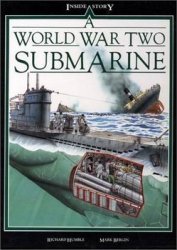Inaugurates operations on January 1, 1933 by flying fresh vegetables from Edmonton to the Eldorado Mines at Great Bear Lake. The route to Great Bear Lake is continued. During 1938, scheduled flights are undertaken linking the company’s base with Port Radium via Yellowknife and Gordon Lake.
During the spring of 1941, the carrier is purchased by Canadian Pacific Railway and is merged with the Canadian Airways, Ltd. service from Edmonton to Prince Albert under the marketing title United Air Services, Ltd. in July. Six months later, on January 30, 1942, Mackenzie is one of several air transport companies merged to form Canadian Pacific Air Lines, Ltd.
MACKEY AIRLINES: United States (1965-1967). MA is established by Colonel Joseph Mackey as a subsidiary of his Mackey Air Taxi at Fort Lauderdale, Florida, in 1965 to operate both domestic and international scheduled services. Airline employment is 220 and the fleet includes 1 Douglas DC-3, 1 DC-4, and 6 DC-6s. Flights are inaugurated to West Palm Beach and Miami while, as a flag carrier, frequencies are also provided to the Bahamas. A total of 261,765 passengers are flown. Negotiations are initiated late in the year with Eastern Air Lines and a petition is filed seeking merger with the major. In early 1967, the airline division is sold to Eastern.
MACKEY INTERNATIONAL AIRLINES: United States (19681982). After selling its large-plane division to Eastern Air Lines in
1967, Col. Joseph C. Mackey, owner of Mackey Air Taxi, establishes a local third-level commuter service at his Fort Lauderdale base early in
1968. Employing a Piper PA-31-310 Navajo and a Beech 99, the carrier inaugurates scheduled passenger services to its former destinations on March 3.
Two years later, in December 1970, Mackey receives CAB authority to operate large aircraft and to take over a number of third-level routes being dropped by Eastern Air Lines and vacated with the failures of Bahamas Airways, Ltd. and Air Caicos, Ltd. A fleet of Convair CV-440s is acquired to operate the new frequencies.
Destinations visited from the enhanced Florida commuter gateways include Bimini, Georgetown, Marsh Harbour, Treasure Cay, Freeport, Nassau, North Eleuthera, Cape Eleuthera, the Turks and Caicos Islands, Rock Sound, and Cap Haitien.
Operations continue apace in 1971-1972. Stock clerks, clerical and office workers, passenger service employees, and stewards—all members of the International Association of Machinists and Aerospace Workers (IAM) — strike the carrier on March 29, 1973. Several negotiation sessions later, the job action is settled.
Enplanements for the year reach 169,752.
Airline employment in 1974 totals 255 and the fleet includes 8 Con-vair CV-440s and 2 Douglas DC-6s.
Passenger boardings decline 2.2% to 166,098.
The workforce is reduced by five employees in 1975. The Miami-based carrier now receives permission from the CAB to operate 90-seat aircraft on both scheduled and charter flights between Florida and the Bahamas.
After joining the Delta Air Lines Deltamatic computerized reservations system, Mackey undertakes an aggressive advertising campaign to insure traffic to these new destinations. In addition, all personnel receive new uniforms. The fleet at year’s end comprises 12 Convair CV-440s and Douglas DC-6Bs.
Enplanements fall another 2%, down to 161,789.
In 1976, the number of employees is increased by 4% to 260. Flights begin to two additional Bahamian destinations while petitions are filed seeking authority to other Caribbean locations. In addition, the CAB is asked to certify the company as a first-level airline.
After the May 25 bombing of its Fort Lauderdale offices, the company cancels its current charter and projected regular flights to Cuba; the terrorism is attributed to Cuban exiles.
The 5 DC-6Bs and 6 CV-440s carry 177,330 passengers during the year, an increase of 9.6%.
By 1978, airline employment is 250 and the fleet comprises 8 Convair CV-440s, 4 DC-6Bs, and 1 original Navajo. In 1979, the fleet is radically altered in hopes of growth and by year’s end and includes 2 CV-580s, 2 CV-440s, and 3 leased former-Delta Air Lines DC-8-51s.
A CV-440 veers off the runway while landing at Freeport in the Bahamas on November 24 and ends up 225 ft. off the runway in the water. There are no fatalities.
Enplanements for the year fall to only 41,000.
A scheduled DC-8-51 route is inaugurated on April 28, 1980 between Fort Lauderdale and Los Angeles via Las Vegas. The route is unsuccessful and is suspended in July; two Douglas transports are sold and the third is placed on charter work. As the result of a boardroom battle between its major executives and shareholders, the company shuts down on October 24.
This closure, recession, and a huge inflation are devastating; overall passenger boardings plunge 47.2% to 38,000.
During 1981, the company resumes operations and places renewed emphasis upon its Florida commuter operations. It increases its fleet by the addition of a Short SC-7 Skyvan for its Fort Lauderdale to West Palm Beach segment and a de Havilland Canada DHC-6 Twin Otter for the Fort Lauderdale to Miami service. Unable to weather higher fuel costs and recession, the carrier ceases operations in October and is liquidated in 1982. There is an unofficial website at Http://www. mackeyairlines. com.




 World History
World History









